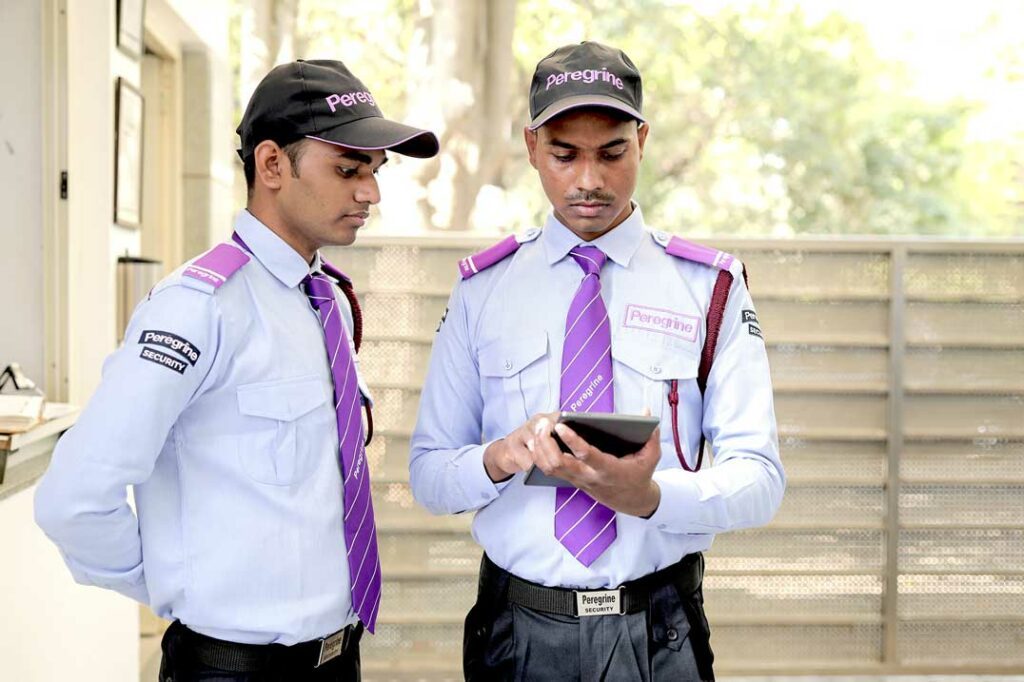“More than anything else technology creates our world. It creates our wealth, our economy, our very way of being.”
In his 2009 book, “The Nature of Technology: What it is and how it evolves”, W. Brian Arthur rightly sums up the irrefutable importance of technology in our world. Technology much like humans has this innate tendency to evolve over a while. Learning from human intelligence, it presents us with hundreds of simple ways in which we can carry out our daily activities in a more productive manner with maximum efficiency and minimum costs.
Productivity, efficiency, and costs are some of the most common advantages that technology brings to every industry. During the COVID-19 pandemic, this list of advantages increased manifold as every industry tussled to adopt and adapt technology to fit into the dynamic landscape. And the security industry was no exception. From 2020 till the present, the security industry has been undergoing a massive transformation driven primarily by technology, changing the role of security personnel into security officers, CCTV cameras into active vigilantes, and traditional buildings into smarter complexes.
Private security has gone up and beyond protecting premises and assets against crime and theft to bring newer levels of security intelligence to customers, communities, and society in its entirety. Much of the promising growth behind the global private security market of a projected CAGR of 10.3% is indebted to the technology such as A.I., IoT, M.L., and the role each of them has played in making Asia the largest market for security services worldwide in 2020, valued at 37 billion U.S. dollars.
As we are half past the year 2022, several tech trends have been observed since the onset of the year that continues to affect the security industry positively.
- Hybrid security as an upgrade:
The hybrid work models are a new reality with 63% of high-growth businesses using hybrid models, as per a 2021 study by Accenture. In such a case, businesses are required to ensure safer and securer work environments for on-site employees and multi-factor authentication solutions for remote working professionals. A mix of on-site security personnel and off-site remote monitoring system upgrades the existing security strategy and systems put in place. As also witnessed during the worldwide COVID-induced lockdown, technology improves the situational awareness of the on-site security personnel, leading to proactive vigilance and safety as a result. Solutions such as virtual patrolling software or remote command and control centre operations empower the security professionals to keep their eyes on every nook and corner of the facility while also responding to or patrolling risk-prone areas, whenever necessary. This way, businesses do more with existing team resources, bringing in cost-efficiency.
2. Security automation to ramp up:
Contrary to the pre-pandemic notion of remote monitoring and video surveillance, offsite remote monitoring is now proven effective in deterring crime. Advanced technologies such as Artificial Intelligence, IoT, and Machine Learning have made remote monitoring faster, efficient, accurate, and more reliable in recent years. Private security companies now connect directly with the CCTVs at a client’s site or install their very own video surveillance system for monitoring the premises from afar. This provides better, expansive, and 24×7 coverage of the premises, reducing any scope for potentially dangerous situations. Moreover, the self-learning technology can prompt security teams, on-site or off-site to take suitable action in real-time without any delay.
3. Mobile apps for workforce management:
Over the past couple of years, the security personnel has taken up responsibilities beyond their traditional scope of work, including employee safety and loss prevention. Today, they are tasked with COVID-19 regulation enforcement at their job sites. This includes health screenings, temperature checks, crowd management, mobile patrols, emergency response, etc. Handling such a critical range of activities, private security companies have provided their security workforce with smartphones with in-built guard management applications. These apps help them with their attendance, tasks for the day, learning modules, crisis-related policies, and other on-the-go references required. These mobile apps come with flexible messaging tools that help security teams stay connected through seamless communication in case of any emergency. Even better, guards can patrol their sites using a mobile device and then file their reports on mobile applications. This also brings in transparency to both the customers and the security service providers.
4. Learning management tools:
Early in March this year, Union Home Minister, Amit Shah advocated the development of a “hybrid security model” where private security companies can be trained and certified by the Central Industrial Security Force (CISF) so that industrial and manufacturing units in the country can be efficiently guarded. As CISF gets ready to prepare the strategy for a hybrid model of security where both CISF and private security personnel can work, the private security companies have already started training their workforce so that they can shoulder the tasks handed over by CISF soon. For these, the companies are investing in the various learning management tools and systems to implement and monitor the learning programs and training modules of the security personnel up the highest level across the country. India has one of the largest private security workforces in Asia. Their security awareness and threat combat training can only be done efficiently as well as effectively with the use of learning management tools, which most of the leaders in the sector have started incorporating.
5. Sustainability in security:
Sustainability is no more just a buzzword. As businesses commit to net zero and ESG, private security companies have started to work on their sustainability measures. For instance, remote monitoring is being advocated and promoted because multiple facilities can be monitored from a single site with less security staff, which means the security officers would not need vehicles to do the patrolling, thus reducing carbon emissions and energy usage. With growing hype around the electric fleet, many security companies may also look at commissioning electric vehicles as QRTs. Similarly, ethical sourcing of other physical security products such as perimeter fencing, and vehicle and pedestrian barriers is also being stressed upon as they are more sustainable in the long run.
6. Contactless access control solutions as the new norm:
We all know how COVID-19 has changed the way people interact with tangible objects and thus, the dawn of touch-less access control solutions. With a renewed focus on reducing viral transmissions at human-to-object touchpoints and prevention of cross-contamination, facial recognition software or digital credentials are here to stay. As per Omdia (2021), facial recognition readers will continue to lead the biometrics market with projected 27.1% average annual growth over the next five years. Improvements in 3D facial modeling and analytics technologies have led to facial recognition becoming much more accurate, and analysts predict that error rates for advanced facial recognition readers will soon mirror the accuracy rates of the fingerprint reader.
7. Network security infrastructure gaining prominence:
With technology at the heart of everything we do, especially in the security domain, data and network security have become a top priority for businesses and security partners. IBM’s report of the Cost of a Data Breach Report 2021 shares that data breach costs rose from USD 3.86 million to USD 4.24 million, the highest average total cost in the 17-year history of this report. The average cost was USD 1.07 million higher in breaches where remote work was a factor in causing the breach, compared to those where remote work was not a factor. Hence, security measures such as double authentication access control, firewalls, VPNs, behavioural analytics, intrusion prevention systems, and wireless security are a must for both the security services providers and the customers.




